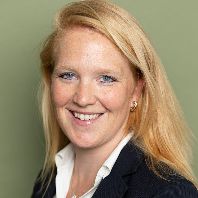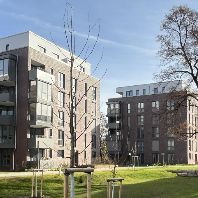The property investment market has started the year strongly, with quarterly volumes in EMEA of €32.7 billion, 15.7% up on Q1 2012, and annual volumes of €136.7 billion, 4.4% up on the previous year according to property consultants Cushman & Wakefield. Activity was down on Q4 2012 by 24.8% - but this is not unusual, with the opening quarter typically quieter than the busy year-end period (by 25% on average over the previous five years).
Growing levels of activity are in fact being supported by both more debt and more equity in the market although with the supply of core product limited and pricing up, many investors are frustrated in their search for opportunities and in response demand has shown some signs of broadening.
According to Jan Willem Bastijn, Head of Capital Markets at Cushman & Wakefield, EMEA, “The year has started well with plenty of momentum from Q4 spilling over into this year. A subtle change is happening in the market however, with the core countries maintaining strong interest and a high market share but more risk-taking also emerging as well as increased interest in diversifying. What’s more, in seeking out larger lots such as quality shopping centers, investors will increasingly go where the stock is–leading to more activity of late in Central Europe for example.”
Looking ahead, Bastijn commented that “The momentum we develop this quarter will set the scene for the summer and will be key to how busy we are for the year overall. With lots of available core capital and increased interest from opportunistic players, activity levels are likely to increase in our opinion and our forecast for the year is €136 bln, 4% up on 2012.”
The core markets continue to see most demand, with volumes in the big 3, the UK, Germany and France, up by 32% on Q1 2012 and their market share up from 57% to 64%. The Nordic block, a strong favorite in 2012, had a tougher Q1, with stock shortages and higher pricing holding back activity in Sweden, and gains in Denmark failing to offset this.
By country, the main growth in activity on the quarter was in fact in Denmark as well as Germany, Russia, the Czech Republic and Hungary as well as Luxembourg and the Netherlands. Ireland and Greece picked up from a low level while Italy saw reasonable activity but Spain, Portugal and Turkey were muted. The Middle East and South Africa also fared poorly, with a 40% drop in volumes on Q1 2012 due to ongoing risks in these regions.
By sector, industrial had a strong opening quarter, with volumes up 77% on Q1 last year and its market share rising from 8% in 2012 to 11.4%-its highest since 2010. This was supported by deals in Central Europe, France, Germany and the Netherlands in particular but there is an increasingly positive stance among investors towards the sector in general as it is seen as a potential winner from the growth of online retailing as well as demand for greater efficiency in the supply chain.
Retail demand has also been good, if selective, and while volumes were down on Q4, they were 34% ahead of the Q1 2012 average despite a shortage of quality assets in the market. Its market share rose to 25% versus 22% last year thanks in particular to increased shopping centers sales in the UK as well as France and Russia.
Offices meanwhile had a disappointing quarter after a strong showing in 2012, with volumes dropping 4.8% and its market share down to 43% as against 49% on average in 2012. France, the UK, Norway, Spain and Sweden contributed most to the drop in activity, with a shortage of larger lots and quality assets mainly to blame.
Stronger cross border demand remains important in most areas and while foreign players cut investment activity more in Q1 than domestic players (36% versus 16%) their contribution is up strongly over the year – by 25%-and their market share has increased from 35% in Q1 2012 to 38% in Q1 of this year. Larger lots are particularly sought after, with sovereign wealth funds, global pension funds, REITs and some high net worth individuals seeking out such assets. At the same time, the yield spread between prime and non-core is attracting more interest and asset management potential is being keenly assessed in some areas, for shorter leases for those with value-add strategies for example.
Commenting on the market position, David Hutchings, Head of European Research at Cushman & Wakefield, said “Armed with a slightly improved flow of debt finance, investors are likely to steadily cast their net wider as the year progresses, taking in smaller mature markets as well as stressed and emerging markets in the process where the dynamics of supply and demand are supportive of future growth and income security. Risks to the macro environment or specifically to income will however continue to polarize the market.
"The last few months have again produced their fair share of ups and downs on the economic and political front but sentiment has held up well and hence while investors are right to remain cautious over the pace of economic recovery, with demand and supply where they are, the trend for prime yields can only be one way. Indeed, with bond yields at current levels, prime property with long leases is looking particularly attractive.”
Source: Cushman & Wakefield














